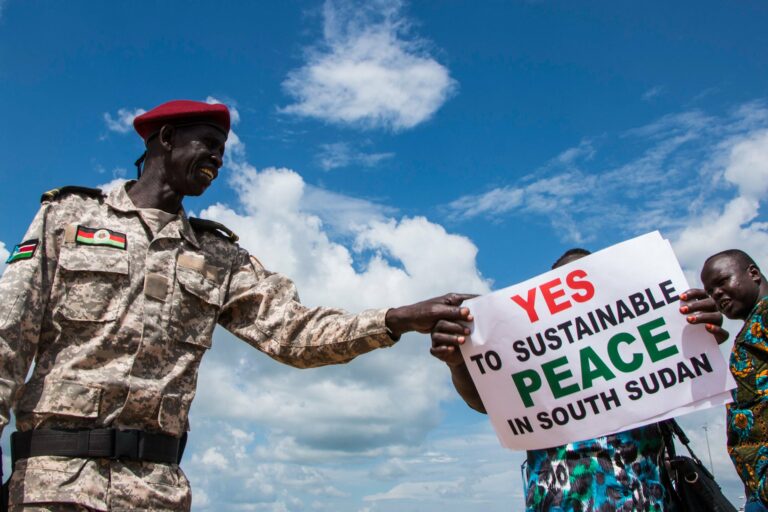The conflict in Ukraine, now thirteen months long and counting, has made clear the costs of failed deterrence. The first lesson to draw from this conflict is that Russia invaded because there was no credible deterrence in place. The second lesson is one measured in clear metrics: since February 2022, the United States has largely sponsored Ukraine’s defense, totaling more than $76.8 billion in aid.
This raises an important question: How much would American taxpayers be saving had the government invested in strong deterrence in Ukraine before February 2022? The cost would certainly have been less than $76.8 billion—a figure that doesn’t even account for the hundreds of thousands of lives that have been destroyed by the conflict, the devastation to Ukraine’s infrastructure, and the damage to the overall global economy.
As Ukraine has drawn deeply from both American coffers and munitions stockpiles, prudence requires policymakers to at least consider a more reasonably priced venture: Security force assistance offers deepened ties with partners against autocratic and authoritarian competitors, but a proactive one that comes at considerably less total cost than reactive force-shaping on the fly.
To be sure, the United States sent Ukrainian security forces piecemeal weapons and equipment before February 2022, but this was not enough to discourage a Russian invasion. Credible deterrence rests on security partners collaboratively achieving defensive, repellent capacity before conflict—which means more than simply having weapons and technology.
A robust security assistance relationship proved viable in Finland and Sweden, who, like Ukraine, were not NATO members before this war but whose security interests are closely aligned with those of the United States and who faced security concerns with Russian aggression. In both Nordic nations, the United States regularly conducts multilateral military exercises in addition to a prolific foreign military sales portfolio.
The United States also has a trilateral agreement on expanding defense policy and interoperability with Finland and Sweden, who are both members of the Enhanced Partnership in Northern Europe (E-PINE) institution, a collective group aligned with NATO interests as “enhanced opportunities partners.”
Ukraine has benefited from foreign military sales and limited bilateral exercises. But the extent of security assistance there was limited to the Joint Multilateral Training Group–Ukraine program based in Grafenwoehr, Germany prior to February 2022 and readiness exercises like Rapid Trident and Sea Breeze—both of which were narrow in scope and cooperative security capabilities. Ukraine, unlike those Nordic counterparts, does not enjoy membership in a collective security institution like E-PINE, although it has been designated an enhanced opportunities partner, making it ideal for increased security force assistance programming.
Assisting vulnerable partners in reaching that deterrent capability can be achieved through “unified action to generate, employ, and sustain local, host nation or regional security forces in support of a legitimate authority,” which is security force assistance by definition. The United States and her allies cannot realistically afford to sponsor the next strategic crisis—in Taiwan, for example—when such actions cost $46.6 billion in a year’s worth of military aid alone.
How does security force assistance avoid the need for such expenditure? It takes military personnel, trained and certified as cross-cultural experts, and deploys them abroad to integrate with partners and potential allies, while training those partners on equipment delivered through US foreign military sales to interoperability standards and improving security integration.
An example here is the increased security assistance provided to Moldova beginning in 2016—military exercises with American troops and $63 million in defense equipment—even amid that nation’s flagging support for deeper NATO cooperation while fears of Russian aggression rose.
This process requires the assistance of US weapons, defense technology sales, and grants, conducted under Title 22 foreign military sales. But those weapons sales alone—known as “security cooperation” and distinct from security force assistance—are not enough; building capability and thereby achieving a deterrent effect requires the hands-on, integrative segment that necessarily comes after security cooperation. And of note, those weapons sales come with a major backlog.
Forward-staging personnel who understand the value and impact of joint and combined operations—the United States did just spend twenty years integrating closely with new and old partners alike—is easier than the complex negotiations in weapon sales. But in order to send those personnel, the Defense Department must prioritize tasking authorities and align people and resources by directive to enable deliberately delivered security assistance that reduces the prospect of future war—and its associated costs.
DoD emphasis on security force assistance capabilities has been uneven in recent years. The Army stood up security force assistance brigades that have been rotating abroad for years, but is struggling to find combatant command support authorities and funding for those operations.
Meanwhile, the Air Force—which recently shut down its only advisor-capable operations units—is now at a deficit for security force assistance despite its success in training and enabling Afghan partners before the 2021 withdrawal. The need for security force assistance grows, and DoD must continue to define and source its security force assistance capabilities to respond to the demand.
Strategic forecasts can presume that a future confrontation—one involving direct US engagement—will be even costlier than the proxy conflict in Ukraine. To avoid that confrontation, there are two options, the United States must shift away from the status quo of talking points about increased cooperation and actively deepen security integration by using security force assistance to demonstrate American commitment to collective security.
In the short term, security force assistance at least alters our competitors’ strategic calculus when considering the plunge into conflict. The US military—still establishing a new, post-Afghanistan identity for an era of strategic competition—is uniquely capable of building those integrated capabilities and deterring costly confrontations. Whether in Europe in the face of Russian aggression, in African countries that are both vulnerable and strategically important, or in defiance of a threat to Taiwan, this is an approach that is both effective and cost-effective.
Security force assistance is a tool that remains underutilized. It is a tool that has proven to enable and facilitate strategic objectives so long as the will to sustain cooperation remains a pillar in American foreign policy. Such initiatives are perfectly suited to the objectives described in the key in the 2022 National Security Strategy: build partnerships, develop and sustain cooperative security, and share the collective security interests of those states opposed to authoritarian power brokers.
Strategic competitors have watched Moscow’s failure to seize control of Ukraine and are as considerate of the lessons from this conflict as we are in the West, if not more so—especially as the cost of the war continues to grow. Failure to preemptively deter aggression through increased security force assistance—a more cost-effective option than funding the defense of a partner after it has been invaded—risks the United States and allies having to foot another heavy bill, in an even more destabilized world, after the next act of aggression.
Ethan Brown is a Senior Fellow at the Mike Rogers Center for Intelligence and Global Affairs at the Center for the Study of the Presidency and Congress. He is an eleven-year veteran of the US Air Force as a special operations joint terminal attack controller with six deployments to multiple combat zones.
Source: MWI








Leave a Comment